Inspiration and Innovation
Brilliant brainstorms that took root at the University of Dayton and changed the world
ROBOTIC DINER
Being able to feed oneself fulfills a basic human need. Jonathan Dekar ’11 is giving that power back to people with 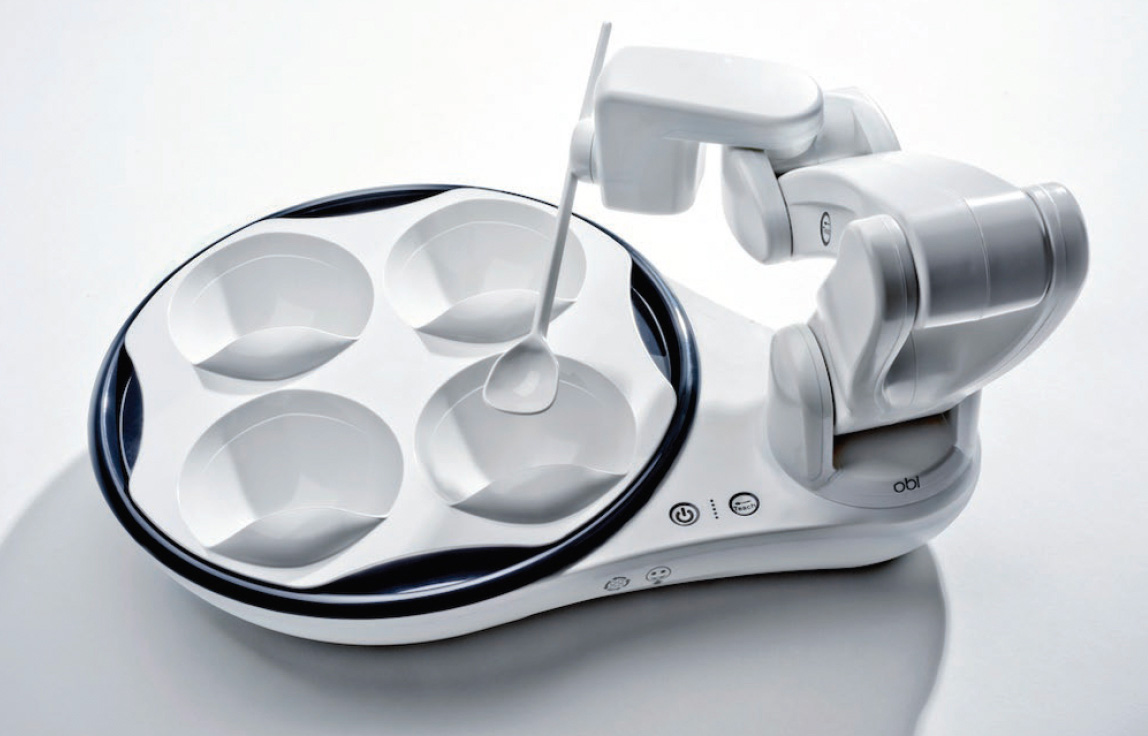 multiple sclerosis, cerebral palsy and other conditions that limit range of motion through his invention, Obi. The tabletop device has an automated spoon, robotic arm and a four-course compartmentalized plate that can accommodate foods cut into sizes ranging from a pea to a grape. Dekar first worked on a prototype of the robotic eating device during his freshman-year engineering course. Ten years later, Obi is now available for home use. The device can be operated by switches controlled by the head, shoulders, legs, feet or mouth. “This wasn’t just another engineering project, getting food from point A to point B. I wanted it to be emotionally empowering and inspiring,” Dekar said.
multiple sclerosis, cerebral palsy and other conditions that limit range of motion through his invention, Obi. The tabletop device has an automated spoon, robotic arm and a four-course compartmentalized plate that can accommodate foods cut into sizes ranging from a pea to a grape. Dekar first worked on a prototype of the robotic eating device during his freshman-year engineering course. Ten years later, Obi is now available for home use. The device can be operated by switches controlled by the head, shoulders, legs, feet or mouth. “This wasn’t just another engineering project, getting food from point A to point B. I wanted it to be emotionally empowering and inspiring,” Dekar said.
PUTTING OUT FIRES
Among the 92 patents held by Carroll Hochwalt, Class of 1920, was the creation of the first practical chemical fire 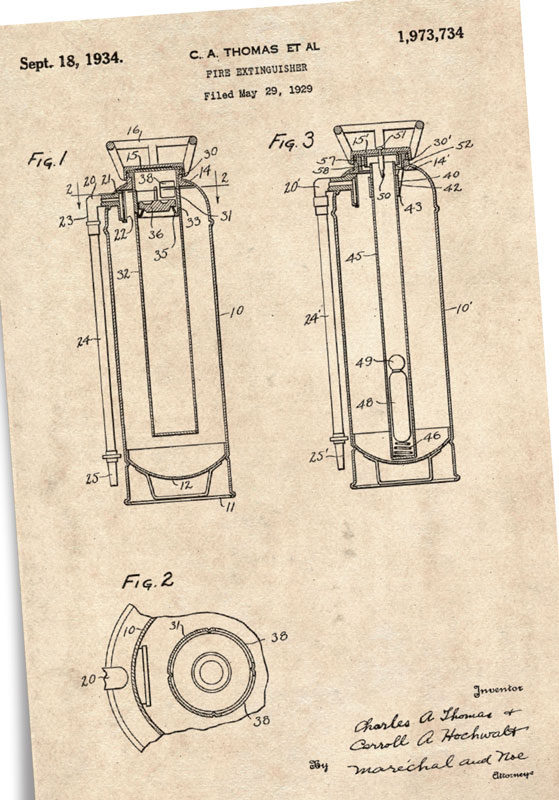 extinguisher. In 1925, Hochwalt sought the assistance of Brother William Wohlleben, S.M. ’04, with developing a non-freezing fire extinguisher. Wohlleben provided laboratory space for Hochwalt and his partner, Charles Thomas, to perfect a product that they subsequently sold to the Fyr Fyter Co. In his patent filed May 29, 1929, Hochwalt describes how they discovered potassium lactate not only was superior in extinguishing fires but also prevented the extinguisher from freezing at temperatures of 20 degrees Celsius and below. Among his other innovations with household applications were the process for iodizing Morton’s Salt, creating a low-suds washing machine detergent called All and developing a fast-aging technique for the National Distillers’ Association. In 1936, they sold Thomas & Hochwalt Laboratories to Monsanto, where Hochwalt became director of central research.
extinguisher. In 1925, Hochwalt sought the assistance of Brother William Wohlleben, S.M. ’04, with developing a non-freezing fire extinguisher. Wohlleben provided laboratory space for Hochwalt and his partner, Charles Thomas, to perfect a product that they subsequently sold to the Fyr Fyter Co. In his patent filed May 29, 1929, Hochwalt describes how they discovered potassium lactate not only was superior in extinguishing fires but also prevented the extinguisher from freezing at temperatures of 20 degrees Celsius and below. Among his other innovations with household applications were the process for iodizing Morton’s Salt, creating a low-suds washing machine detergent called All and developing a fast-aging technique for the National Distillers’ Association. In 1936, they sold Thomas & Hochwalt Laboratories to Monsanto, where Hochwalt became director of central research.
A NICE CROWN
One day in his lab at DuPont, Charles Pedersen ’26 discovered, as a byproduct to what he was trying to do, some 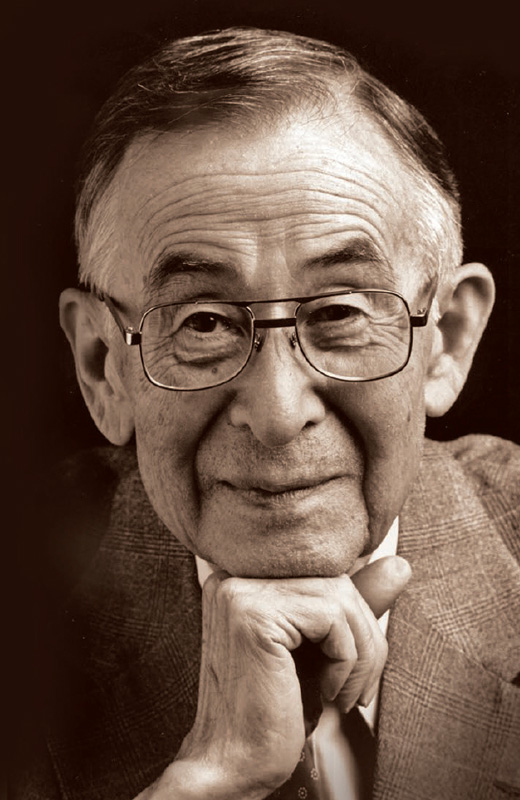 unknown crystals. He named them crown ethers. “Crown,” he said, because official names “were so complex and hard for me to remember.” And they were like crowns because, unlike necklaces, they had no fasteners that opened and closed; they maintained their unbroken structure during reactions. Despite that remarkable characteristic, crown ethers seemed to hold little prospect of immediate commercial value. Nevertheless, DuPont let Pedersen work on them for nine years. Later they became used in many applications from isolating and removing small, harmful concentrations of mercury from drinking water to helping identify potassium in blood samples. And one day later in life, Pedersen got a phone call. From Sweden. He had won the 1987 Nobel Prize for chemistry.
unknown crystals. He named them crown ethers. “Crown,” he said, because official names “were so complex and hard for me to remember.” And they were like crowns because, unlike necklaces, they had no fasteners that opened and closed; they maintained their unbroken structure during reactions. Despite that remarkable characteristic, crown ethers seemed to hold little prospect of immediate commercial value. Nevertheless, DuPont let Pedersen work on them for nine years. Later they became used in many applications from isolating and removing small, harmful concentrations of mercury from drinking water to helping identify potassium in blood samples. And one day later in life, Pedersen got a phone call. From Sweden. He had won the 1987 Nobel Prize for chemistry.
HORSE AND BUGGY SENSE
In harness racing, a horse and driver can reach speeds of 30 mph. Between the driver and the track are two wheels and 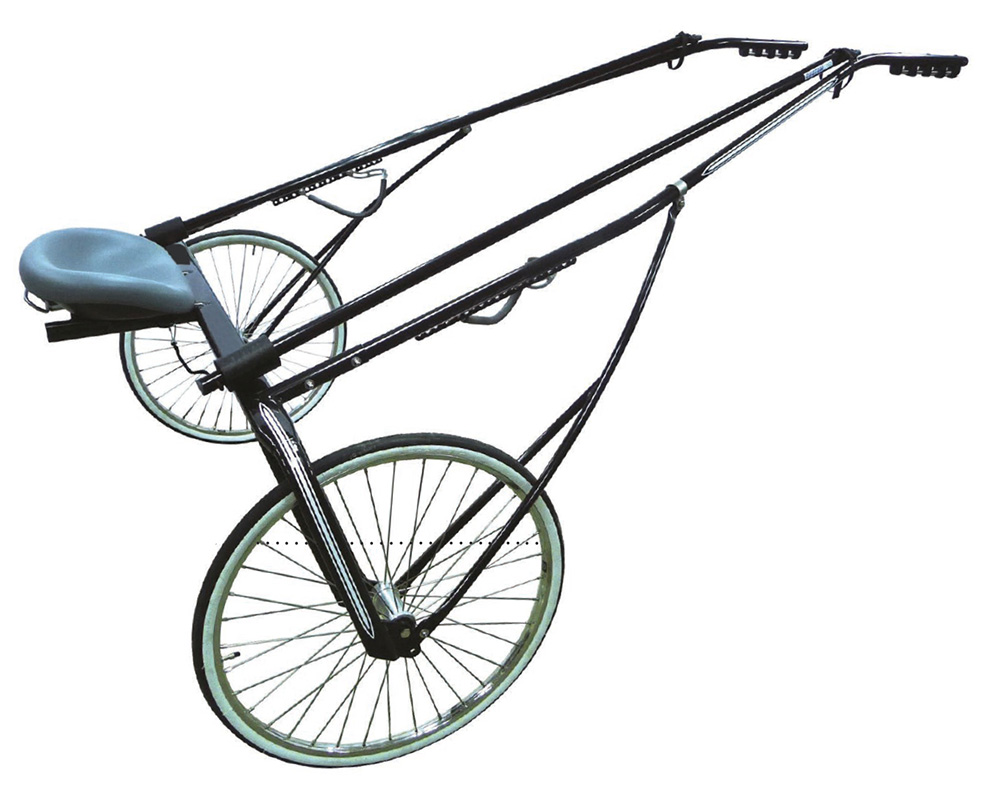 a seat attached to the frame. Bad news if the frame breaks. Odds of that happening were reduced a quarter of a century ago when the UD Research Institute analyzed sulky frames and developed standards and a testing procedure for the United States Trotting Association. UDRI’s Structures and Materials Assessment, Research and Testing Lab became then and is still now the only lab that certifies that a new or revised model of a sulky meets those standards of durability. The lab tests approximately a half dozen sulkies per year — a small fraction of its volume of testing products from ballet shoes to the F-22.
a seat attached to the frame. Bad news if the frame breaks. Odds of that happening were reduced a quarter of a century ago when the UD Research Institute analyzed sulky frames and developed standards and a testing procedure for the United States Trotting Association. UDRI’s Structures and Materials Assessment, Research and Testing Lab became then and is still now the only lab that certifies that a new or revised model of a sulky meets those standards of durability. The lab tests approximately a half dozen sulkies per year — a small fraction of its volume of testing products from ballet shoes to the F-22.
DISHWASHER SAFE AND SOUND
When a worker opens a commercial dishwasher hood, a plume of hot, moist air escapes and creates an uncomfortable 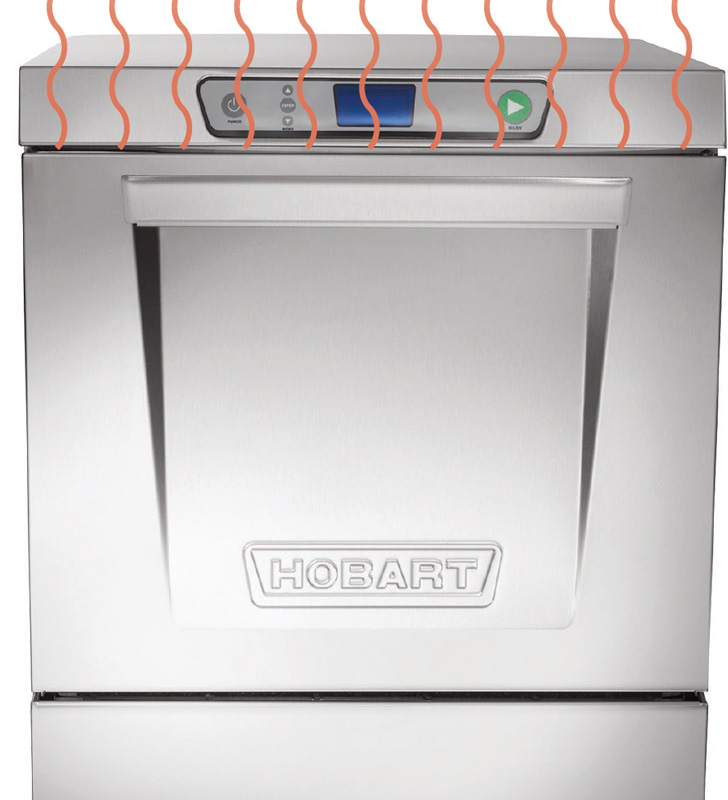 situation for the worker plus heat loss from the machine. Students in UD’s Innovation Center helped Hobart, an international food services company, create a solution to improve operator comfort and save energy for reheating the dishwasher. Seven students are listed on the non-provisional patent filing, which will publish on the website of the U.S. Patent and Trademark Office in early 2018. The team estimates the invention will improve the energy efficiency of an Energy Star machine by at least 5 percent and the drying efficiency by at least 25 percent. “In an age where energy is getting expensive and standards keep rising, every bit counts,” said Alexander Anim-Mensah, Hobart engineering manager and the student group’s mentor.
situation for the worker plus heat loss from the machine. Students in UD’s Innovation Center helped Hobart, an international food services company, create a solution to improve operator comfort and save energy for reheating the dishwasher. Seven students are listed on the non-provisional patent filing, which will publish on the website of the U.S. Patent and Trademark Office in early 2018. The team estimates the invention will improve the energy efficiency of an Energy Star machine by at least 5 percent and the drying efficiency by at least 25 percent. “In an age where energy is getting expensive and standards keep rising, every bit counts,” said Alexander Anim-Mensah, Hobart engineering manager and the student group’s mentor.
HOT HOT HOT
If you’ve ordered delivery from Domino’s Pizza and your pie was still steaming when it arrived, you can thank research done at UD Research Institute for your hot meal. Research conducted at the labs on campus and led by renowned scientist Ival Salyer created phase-change materials that store heat as they melt and release heat as they freeze. UDRI began researching phase-change materials in the 1980s for thermal energy storage, energy conservation and energy cost-savings in buildings. The technology can melt and solidify at precise temperatures, which allows for heat to be released when needed. By the mid- 1990s, licenses for the technology’s use included hot and cold food serving ware, hand warmers, earmuffs and the shipment of temperature sensitive materials — and Domino’s is the only pizza joint that has rights to the “hot bags.”
PLANE TRUTHS
In 1952, UD hired its first five full-time researchers, who pulled up stakes for several risky, classified projects to study the effects of nuclear weapons on aircraft and aircraft components after atomic bomb detonation tests in Nevada. Although safety precautions were taken, it was still dangerous work. “After the blast, we waited about three or four hours and went in with a monitor, a guy who measured radiation,” Charles R. “Bob” Andrews, one of the researchers, said in 1996. “You had to get in and get out quickly.” One test took them to Bikini Atoll in the Marshall Islands, where the researchers flew in a B-56 near a thermonuclear detonation. The explosive yield was nearly twice what was expected, and the plane landed safely despite crushed landing gear doors and an airplane skin that was wrinkled and burnt down to bare metal. Results yielded ways to protect aircraft instruments from extreme heat, radiation and physical shock. It was the beginning of structural testing, which continues to be one of UD Research Institute’s hallmark research areas.
 In 1961, a graduate student’s thesis spawned the UD Research Institute’s first vibration damping research. It grew into a nationally recognized damping team that develops, tests and analyzes sound and vibration-absorbing materials. Researchers used these techniques to fix an airplane engine ring that was cracking and at risk of damaging the engine; the polymer-based fix was applied in 2004 to the Navy’s entire AV-8B Harrier jet fleet. In addition to improving aircraft safety and longevity, researchers have also developed damping systems to reduce vibrations on laser telescopes and satellites and improve the results of air bag testing on crash dummies.
In 1961, a graduate student’s thesis spawned the UD Research Institute’s first vibration damping research. It grew into a nationally recognized damping team that develops, tests and analyzes sound and vibration-absorbing materials. Researchers used these techniques to fix an airplane engine ring that was cracking and at risk of damaging the engine; the polymer-based fix was applied in 2004 to the Navy’s entire AV-8B Harrier jet fleet. In addition to improving aircraft safety and longevity, researchers have also developed damping systems to reduce vibrations on laser telescopes and satellites and improve the results of air bag testing on crash dummies.
Blaine West didn’t know anything about aircraft windshields until 1975, when he met with U.S. Air Force engineers worried about a new trend: The Air Force was losing an aircraft every eight months because of geese, ducks and other birds striking aircraft windshields during low-level flying. “It was obvious that the failure was related to the support frame’s stiffness, and that strength was a problem,” said West, a former researcher from the UD Research Institute, in 1996. The solution: Make the system stronger by making it weaker — a less rigid windshield allowed the “punch” of impact to be transferred to the larger structure. By the late 1970s the Air Force had used UDRI designs to retrofit its entire F-111 fleet. Since then, UDRI has tested and redesigned windshields and canopies for the Air Force and Navy, including the F-15, F-16, F-18, F-22, B-1, B-2, AV-8, A-7, T-38, V-22 and KTX-2 models. A lieutenant colonel once said to West: “I want to thank you. ... I was flying the other day in an F-111. Four ducks hit the windshield, and I’m still here.”
Bob Kauffman was called on as one of the principal investigators to find out what happened to TWA 800, which exploded and crashed in 1996 killing all 230 people aboard. Kauffman, a UDRI researcher, believed that a frayed fuel-sensor wire most likely played a significant role in the explosion. After the crash, Kauffman and senior research physicist Doug Wolf created the SMART (Status and Motion Activated Radiofrequency Tag) sensor for use in smart clamps to hold aircraft wiring in place to help prevent tragedies like the TWA explosion. The technology uses an inexpensive, modified radiofrequency identification tag that “tells” a handheld device reader if a clamp or wire has been compromised. It is also being evaluated as a way to indicate if a monitored item has gotten too hot. In 2009, Bob Kauffman’s self-healing wire, which he developed at UDRI, was named one of the 100 “most technologically significant new products” by R&D Magazine. Known as PATCH (Power Activated Technology for Coating and Healing), the technology helps prevent frayed wires from potentially catching fire. His invention was in response to the 1996 TWA crash that killed everyone aboard and is thought to have occurred because of faulty wiring. The technology works when polyvinyl alcohol is sprayed onto the wire or wire bundle. If that liquid comes into contact with an exposed or live wire, the electrical current at the breach will transform the spray into an insoluble polymer coating. A second form of PATCH is designed to be built directly into the wires, where the solid form of polyvinyl is embedded within the wire and its insulation. If the insulation is breached while the wire is live, the PATCH coating draws moisture from the air and a chemical reaction creates a permanent repair for the wire and its breach. Automotive and helicopter companies are looking to employ PATCH for hard-to-reach wires.
On one rainy day in New Jersey in October 2010, a G-4 Gulfstream aircraft overran its runway while landing at Teterboro Airport. This could have proven deadly. However, no one on board was injured and the plane safely came to a stop. Why? Crushable concrete. Formally called Engineered Material Arresting Systems, EMAS is a mixture of lightweight concrete and a foaming agent. When a vehicle runs over the material, it collapses and provides enough friction to safely decelerate moving planes. The material was created at UD Research Institute in partnership with the Federal Aviation Administration and the Port Authority of New York and New Jersey. John F. Kennedy International Airport in New York City was the first to install an EMAS bed at the end of some runways in 1996. UDRI’s work in runway disaster prevention dates back to the late 1980s. The material has a 100% success rate in stopping aircraft.
Investigators count on the black boxes to give them data to determine what went wrong during an airplane crash and keep it from happening again. Kevin Poormon ’87 is helping them by shooting these boxes — officially known as flight data and cockpit voice recorders — out of a cannon. The compressed gas gun at the UD Research Institute sends the boxes hurling at 350 mph into an aluminum honeycomb barrier to simulate a crash impact at 3,400 times the force of gravity. “That’s because black boxes have to survive, even if everything else doesn’t survive,” said Poormon, research engineer and leader of the impacts physics group. He has also used the cannon to test how space station shielding holds up to meteoroid and orbital debris.
PEARL OF AN IDEA
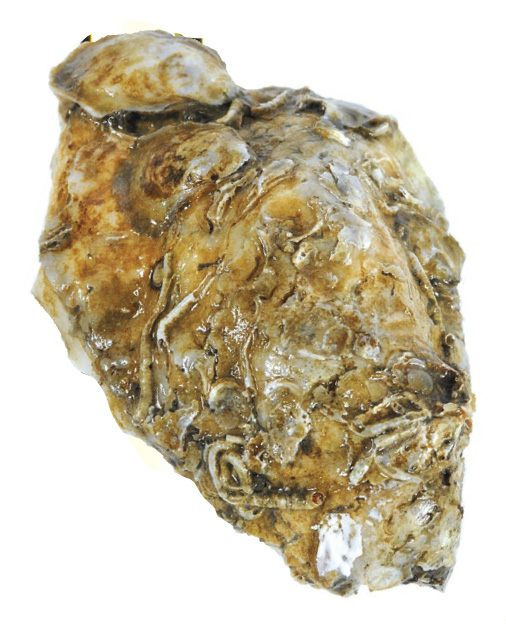 While ceramic coatings in particular are useful in strengthening biomedical implants and improving tissue adhesion, they are resource-intensive to create and pose a risk to the environment. Assistant professor of biology Karolyn Hansen has patented a process for creating an alternative using oyster shells. By depositing cells extracted from the mantle of an oyster onto a surface, Hansen and her collaborators, including her husband Doug Hansen of the UD Research Institute, have successfully induced the creation of oyster shell layers as a coating. This oyster-derived material is a strong, natural ceramic and can be manufactured at room temperature and pressure with no chemical solvents, she said. Uses range from coating metal implants used to repair bones to creating protective coatings for aircraft.
While ceramic coatings in particular are useful in strengthening biomedical implants and improving tissue adhesion, they are resource-intensive to create and pose a risk to the environment. Assistant professor of biology Karolyn Hansen has patented a process for creating an alternative using oyster shells. By depositing cells extracted from the mantle of an oyster onto a surface, Hansen and her collaborators, including her husband Doug Hansen of the UD Research Institute, have successfully induced the creation of oyster shell layers as a coating. This oyster-derived material is a strong, natural ceramic and can be manufactured at room temperature and pressure with no chemical solvents, she said. Uses range from coating metal implants used to repair bones to creating protective coatings for aircraft.
PASSING THE VIRTUAL PLATE
ChurchLink was an idea intended to connect the millennial generation with their churches. Today, it’s a customizable app serving more than 3,000 churches. Entrepreneur Niel Petersen and then-student Robyn Bradford ’12 pitched the idea to UD’s business plan competition in 2012. Thanks in part to the competition and its $15,000 prize, Petersen launched the business and now employees a staff of 10. ChurchLink creates apps with individualized design and coding and includes functionality that allows members to communicate or make a gift online. “Development is continual, ongoing and complex,” Petersen said of the app, now used in 50 states and 27 countries.
EATING OUT(ERSPACE)
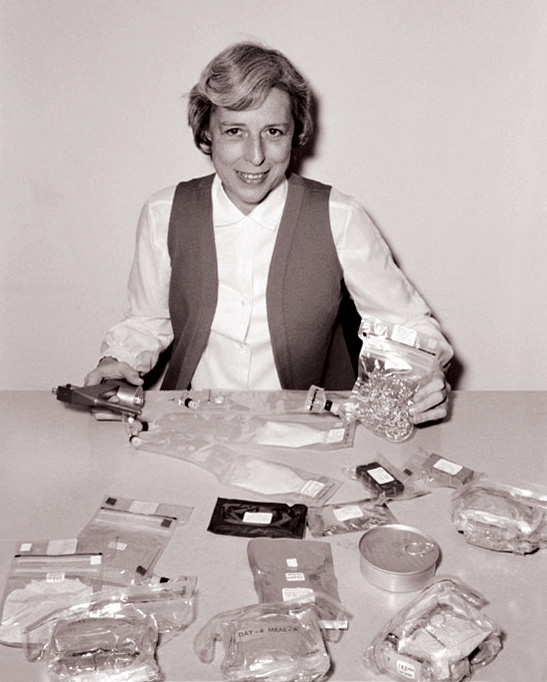 Rita Rapp’s meals were out of this world. A 1950 pre-med graduate, Rapp joined the NASA Space Task Group at Langley Field in 1961 and was among the early pioneers of the space program. As an aerospace technologist specializing in environmental physiology, she was responsible for the design and development of food and packaging systems during the Mercury, Gemini, Apollo and Skylab programs. Astronaut Charles Duke, lunar module pilot for Apollo 16, talked about how Rapp would introduce variety into their pre-packaged meals: “You had pea soup, you had cream of tomato soup, you had mushroom soup, maybe; and you had different kinds of breads and you had the tuna spread and peanut butter spread and the ham spread.” The photo shows Rapp posing with “Day 4, Meal A” from Apollo 16, the last lunar mission to land on the Moon on April 21, 1972.
Rita Rapp’s meals were out of this world. A 1950 pre-med graduate, Rapp joined the NASA Space Task Group at Langley Field in 1961 and was among the early pioneers of the space program. As an aerospace technologist specializing in environmental physiology, she was responsible for the design and development of food and packaging systems during the Mercury, Gemini, Apollo and Skylab programs. Astronaut Charles Duke, lunar module pilot for Apollo 16, talked about how Rapp would introduce variety into their pre-packaged meals: “You had pea soup, you had cream of tomato soup, you had mushroom soup, maybe; and you had different kinds of breads and you had the tuna spread and peanut butter spread and the ham spread.” The photo shows Rapp posing with “Day 4, Meal A” from Apollo 16, the last lunar mission to land on the Moon on April 21, 1972.
SEARS TOWER ARCHITECT
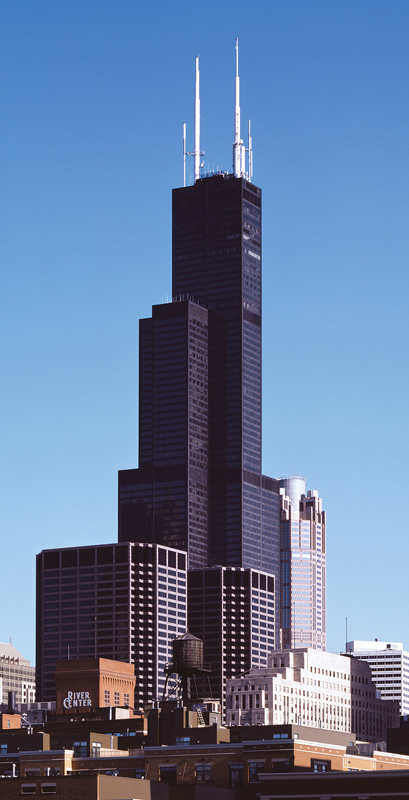 Architect Bruce John Graham once said that, before he traveled to the United States, he had never seen a building more than 10 stories tall. In 1943, Graham was 15 and living in Puerto Rico when he won a scholarship to attend UD to study engineering, staying just over a year before enlisting in the Navy during World War ll. Graham’s most visible legacy stands high above Chicago: the 100-story Hancock Center and the 110-story Sears Tower (now the Willis Tower), the world’s tallest building when it was completed in 1973. The tower was constructed using the groundbreaking tubular frame method, and to this day is the second tallest in the United States and 16th tallest building in the world. It hosts more than 1 million visitors to its observation deck each year. Graham died March 6, 2010, at the age of 84.
Architect Bruce John Graham once said that, before he traveled to the United States, he had never seen a building more than 10 stories tall. In 1943, Graham was 15 and living in Puerto Rico when he won a scholarship to attend UD to study engineering, staying just over a year before enlisting in the Navy during World War ll. Graham’s most visible legacy stands high above Chicago: the 100-story Hancock Center and the 110-story Sears Tower (now the Willis Tower), the world’s tallest building when it was completed in 1973. The tower was constructed using the groundbreaking tubular frame method, and to this day is the second tallest in the United States and 16th tallest building in the world. It hosts more than 1 million visitors to its observation deck each year. Graham died March 6, 2010, at the age of 84.
KEYBOARD MAGIC
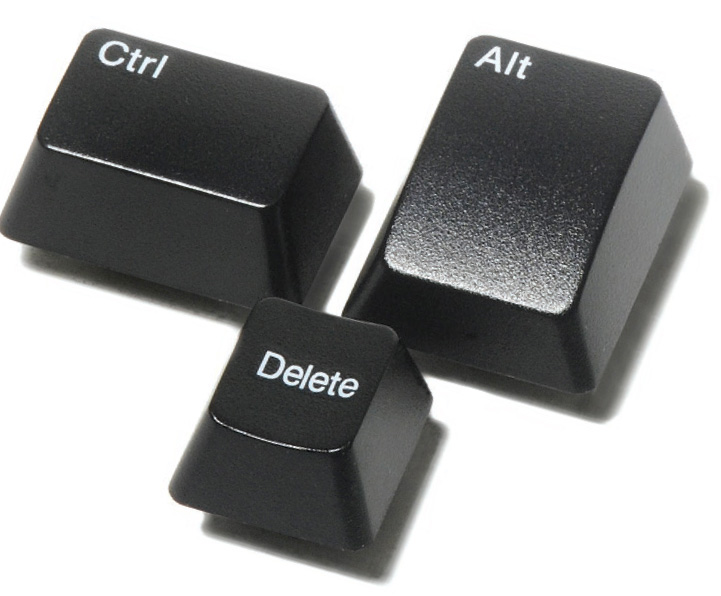 The next time your computer freezes, you can thank a Flyer when you’re quickly able to unlock it. Best known for inventing the three-key sequence known as control-alt-delete, David Bradley ’71 holds 10 patents related to computer design and was one of the original 12 engineers who began work on the IBM personal computer in 1980. Bradley, who earned a bachelor’s in electrical engineering from UD, said he was fed up with restarting the personal computer every time it malfunctioned, and so control-alt-delete was born. “It took all of about nine steps and five to 10 minutes to code,” he said. Initially meant for programmers, the keystroke caught on with the public.
The next time your computer freezes, you can thank a Flyer when you’re quickly able to unlock it. Best known for inventing the three-key sequence known as control-alt-delete, David Bradley ’71 holds 10 patents related to computer design and was one of the original 12 engineers who began work on the IBM personal computer in 1980. Bradley, who earned a bachelor’s in electrical engineering from UD, said he was fed up with restarting the personal computer every time it malfunctioned, and so control-alt-delete was born. “It took all of about nine steps and five to 10 minutes to code,” he said. Initially meant for programmers, the keystroke caught on with the public.
ALLERGY ARRESTER
Charles Magatti ’71 may not be a household name, but the drug he helped invent is: Claritin. The popular allergy medicine, known generically as loratadine, is on the World Health Organization’s 2017 List of Essential Medicines for the most effective, safe and cost-effective medicine for priority conditions. Magatti co-invented the drug while working for Schering-Plough, which is estimated to have made $15 billion from the antihistamine between 1993 and 2002, when its patent was active in the United States. “It’s the ultimate achievement for a chemist,” said Magatti, who studied chemistry at UD. “People work in this industry for 40 years and are never fortunate enough to discover a new drug.” Magatti retired from Schering-Plough in 2000 with six patents.
HOME DISPENSARY
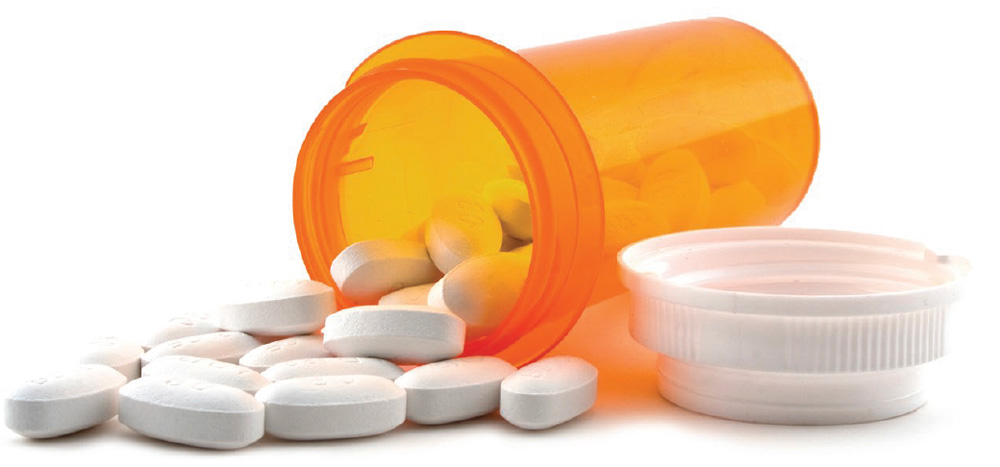 Dr. Mary Ann Warnowicz Papp, a cardiologist and 1970 biology graduate, needed a better way to manage prescriptions for her patients. So in the late 1990s, she went to the School of Engineering for help. Students helped her create the device now known as EMMA, the first of its kind remote medication management system. The box provides individual unit dose control managed by web-based scheduling that is remotely controlled and programmed by a pharmacist. “The biggest waste of health care dollars is pharmacies dispensing a 30- or 90-day supply of medication because the medication is unlikely to be used in that fashion,” Papp said. Automated dispensing can also prevent expensive hospitalizations caused by patients who don’t properly manage their prescriptions. On Papp’s patents for the device is listed co-inventor Chris Schmidt ’99, a member of the seven-student team. EMMA is now being sold through INRange Systems.
Dr. Mary Ann Warnowicz Papp, a cardiologist and 1970 biology graduate, needed a better way to manage prescriptions for her patients. So in the late 1990s, she went to the School of Engineering for help. Students helped her create the device now known as EMMA, the first of its kind remote medication management system. The box provides individual unit dose control managed by web-based scheduling that is remotely controlled and programmed by a pharmacist. “The biggest waste of health care dollars is pharmacies dispensing a 30- or 90-day supply of medication because the medication is unlikely to be used in that fashion,” Papp said. Automated dispensing can also prevent expensive hospitalizations caused by patients who don’t properly manage their prescriptions. On Papp’s patents for the device is listed co-inventor Chris Schmidt ’99, a member of the seven-student team. EMMA is now being sold through INRange Systems.
RARE ATTRACTIONS
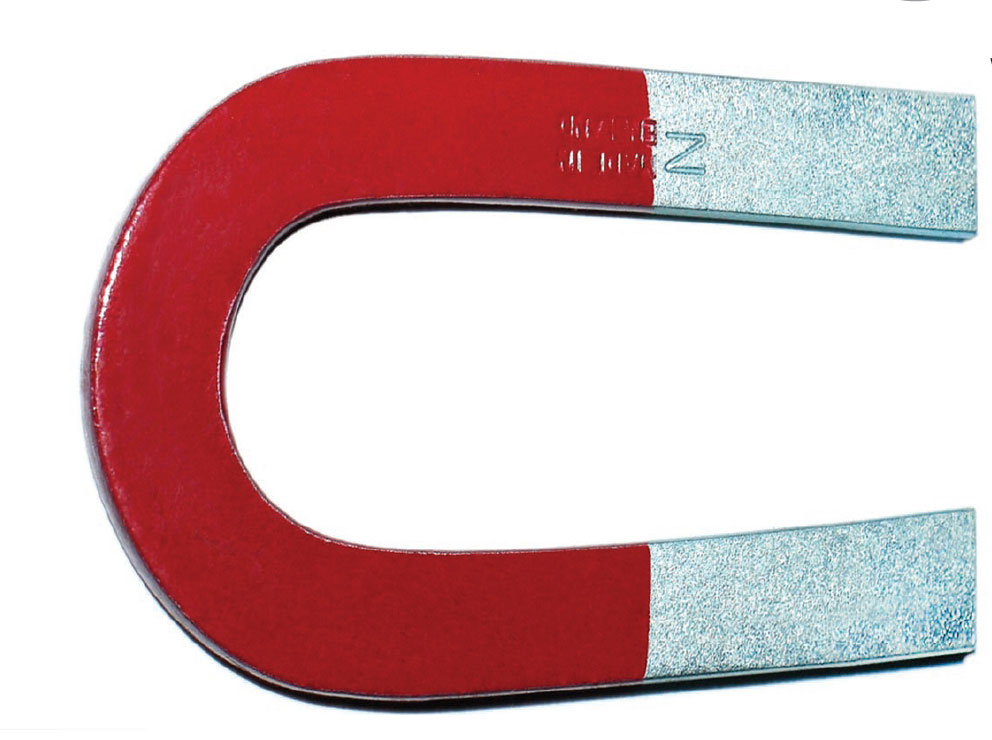 If you’ve ever used a computer, driven a car, flown in an airplane, gotten jiggy to the tunes on your MP3 player, talked on a cell phone, operated a video or digital camera or have been subjected to an MRI, you are benefiting from the discovery of the amazing magnetic properties of rare earth-cobalt alloys by Karl Strnat and his co-workers at the UD Research Institute. Strnat’s pioneering work in 1966 led to the discovery of magneto-crystalline anisotropy in rare earth cobalt intermetallic compounds. What? Simply put, these and later-generation related rare-earth magnets are many times stronger and more stable than the magnets they replaced. They led to the miniaturization of devices that previously required heavy and bulky magnets and gave rise to the development of many electronic devices that require tiny motors, speakers, transmitters and receivers. Strnat retired from his research work and teaching at UD in 1990 and died in 1992.
If you’ve ever used a computer, driven a car, flown in an airplane, gotten jiggy to the tunes on your MP3 player, talked on a cell phone, operated a video or digital camera or have been subjected to an MRI, you are benefiting from the discovery of the amazing magnetic properties of rare earth-cobalt alloys by Karl Strnat and his co-workers at the UD Research Institute. Strnat’s pioneering work in 1966 led to the discovery of magneto-crystalline anisotropy in rare earth cobalt intermetallic compounds. What? Simply put, these and later-generation related rare-earth magnets are many times stronger and more stable than the magnets they replaced. They led to the miniaturization of devices that previously required heavy and bulky magnets and gave rise to the development of many electronic devices that require tiny motors, speakers, transmitters and receivers. Strnat retired from his research work and teaching at UD in 1990 and died in 1992.
LESS TOXIC CHEMO
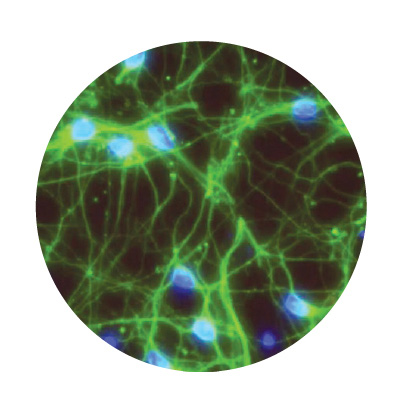 You can inherit your father’s eye color or mother’s smile — and you can also inherit a family disposition for experiencing severe side effects to chemotherapy drugs, including hearing or sensory loss. Eileen Dolan ’79, a professor of medicine at University of Chicago Comprehensive Cancer Center, has dedicated her research to making chemotherapy more effective and less toxic. Her lab identifies DNA variants through studies in patients receiving chemotherapy and in the laboratory by building preclinical models of the toxicity. Her research contributes to efforts to implement genetics into clinical care for cancer patients. Dolan focuses primarily on children and young adults who might experience long-term side effects from chemotherapy because they have their lives ahead of them. “A patient’s genetics sheds light on potential targets for new drugs to prevent or treat these devastating toxicities,” she said.
You can inherit your father’s eye color or mother’s smile — and you can also inherit a family disposition for experiencing severe side effects to chemotherapy drugs, including hearing or sensory loss. Eileen Dolan ’79, a professor of medicine at University of Chicago Comprehensive Cancer Center, has dedicated her research to making chemotherapy more effective and less toxic. Her lab identifies DNA variants through studies in patients receiving chemotherapy and in the laboratory by building preclinical models of the toxicity. Her research contributes to efforts to implement genetics into clinical care for cancer patients. Dolan focuses primarily on children and young adults who might experience long-term side effects from chemotherapy because they have their lives ahead of them. “A patient’s genetics sheds light on potential targets for new drugs to prevent or treat these devastating toxicities,” she said.
SOLAR REFRIGERATION
Students from the ETHOS Center in the School of Engineering used local materials and labor to create an environmentally friendly refrigeration method for a nongovernmental organization in Bihar, India. The Solar-Thermal Absorptive Refrigeration system provides refrigeration for medications and vaccines that could spoil in areas with inconsistent or nonexistent electricity supplies. Students designed the prototype and won three awards for their design at the 2016 USA Science and Engineering Festival in Washington, D.C. Work continues on phase two of the project, thanks in part to a $75,000 grant from the EPA to project advisers Amy Ciric and Jun-Ki Choi, faculty in the renewable and clean energy program.
DEFEAT FOR A DEADLY DISEASE
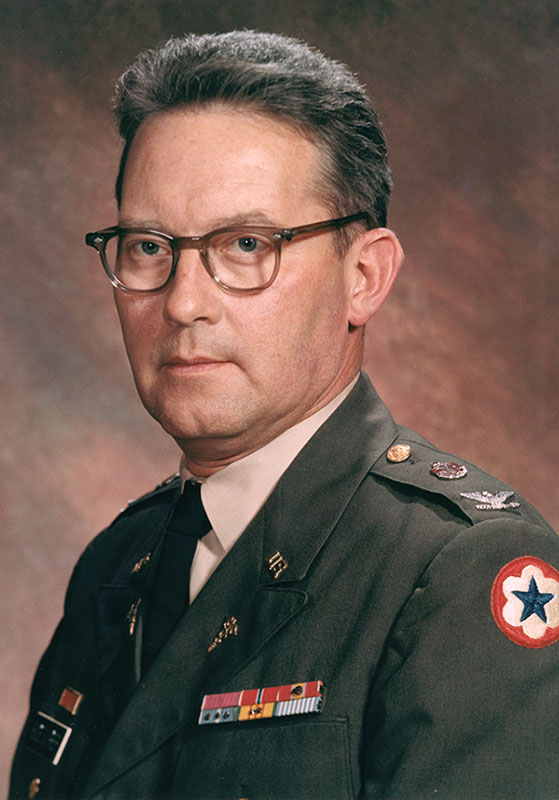 In 1964 and 1965, the rubella pandemic hit the United States, where 1.5 million people contracted the disease also known as German measles. The toll was greatest among the young, including 11,000 pregnant U.S. women who lost their babies and 2,100 newborn deaths. It was the last rubella pandemic the U.S. would have to endure, thanks in part to Col. Edward Buescher ’45. Buescher was a member of the team which, in 1962, isolated and characterized the rubella virus as the cause of German measles. His accomplishment allowed scientists to produce a vaccine, and widespread immunization of children in the United States began in 1970. “[C]ountless lives will be saved in the nation and abroad,” read the citation for the Legion of Merit, bestowed on Buescher in 1969 by the president of the United States.
In 1964 and 1965, the rubella pandemic hit the United States, where 1.5 million people contracted the disease also known as German measles. The toll was greatest among the young, including 11,000 pregnant U.S. women who lost their babies and 2,100 newborn deaths. It was the last rubella pandemic the U.S. would have to endure, thanks in part to Col. Edward Buescher ’45. Buescher was a member of the team which, in 1962, isolated and characterized the rubella virus as the cause of German measles. His accomplishment allowed scientists to produce a vaccine, and widespread immunization of children in the United States began in 1970. “[C]ountless lives will be saved in the nation and abroad,” read the citation for the Legion of Merit, bestowed on Buescher in 1969 by the president of the United States.
POWER OF CURIOSITY
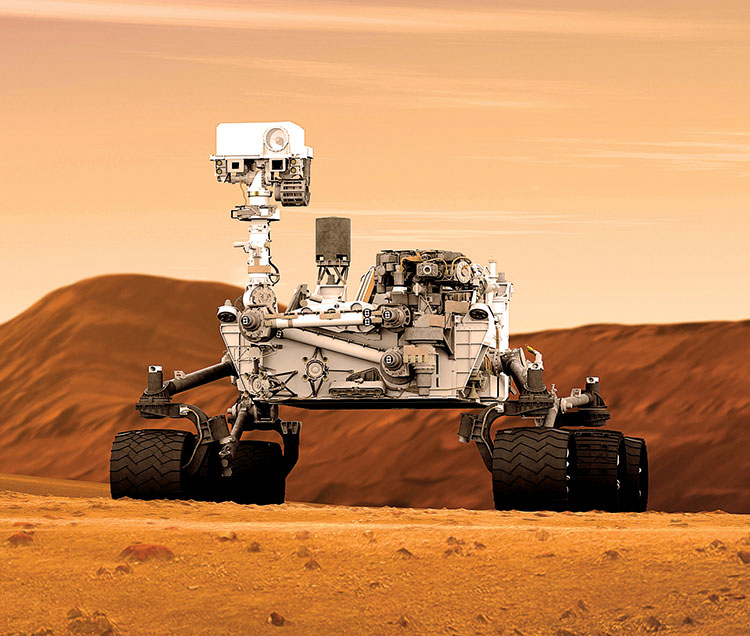 The power of Curiosity was born at the UD Research Institute. Chad Barklay, a senior research engineer in the Research Institute’s energy technologies and materials division, developed the layout and assembly procedures for the radioisotope power system currently on Mars that operates the Curiosity rover’s wheels, robotic arm, computers, radio and instruments. “We helped build the proverbial tail on the Curiosity dog,” said Barklay, referring to the power generator attached to the back end of the rover — whose design, including camera “head,” make it appear somewhat canine-like. The power system, called a multi-mission radioisotope thermoelectric generator, works by converting heat created by naturally decaying isotopes into electricity to power the rover. Heat from the generator also keeps the rover’s mechanical, computer and communication systems at operating temperature. Barklay and his colleagues continue testing a model of the generator in UDRI labs in preparation for future space missions.
The power of Curiosity was born at the UD Research Institute. Chad Barklay, a senior research engineer in the Research Institute’s energy technologies and materials division, developed the layout and assembly procedures for the radioisotope power system currently on Mars that operates the Curiosity rover’s wheels, robotic arm, computers, radio and instruments. “We helped build the proverbial tail on the Curiosity dog,” said Barklay, referring to the power generator attached to the back end of the rover — whose design, including camera “head,” make it appear somewhat canine-like. The power system, called a multi-mission radioisotope thermoelectric generator, works by converting heat created by naturally decaying isotopes into electricity to power the rover. Heat from the generator also keeps the rover’s mechanical, computer and communication systems at operating temperature. Barklay and his colleagues continue testing a model of the generator in UDRI labs in preparation for future space missions.
NEET SEAT
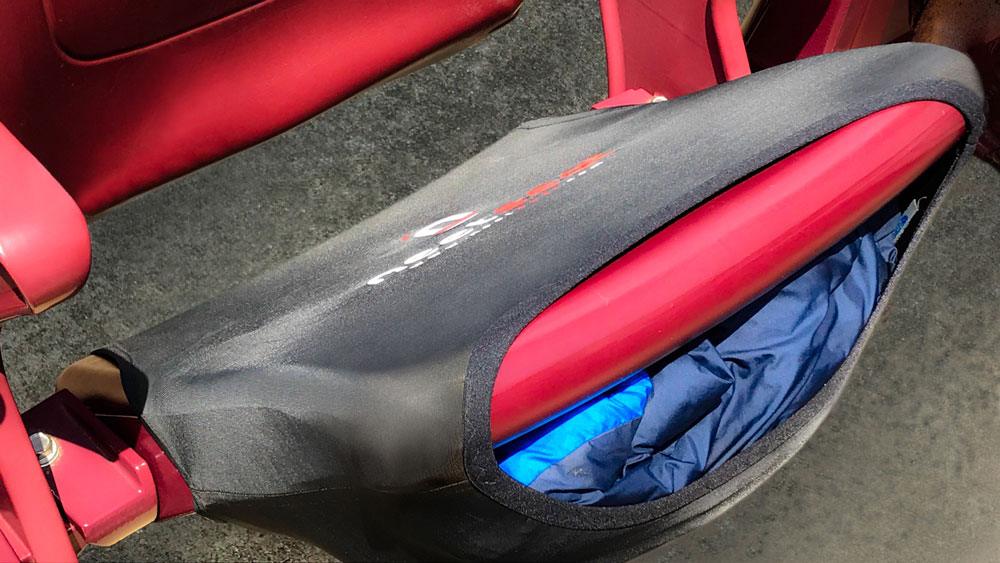 Zach McHale ’06 attends more that 20 college basketball games a year. “But it’s always bothered me that I’ve never had a good place to store my coat,” he said. His consternation became an invention with the Neet Seat, a spandex pouch that slips over your stadium and arena seats to hold coats and other items, keeping them off the floor. McHale, a chemical engineering graduate, won first place and $25,000 during the University’s 2017 Flyer Pitch business plan competition. In July, he launched a campaign to take Neet Seat into production. His company philosophy, he said, “is to create solutions that make the fan experience better — more comfortable and more enjoyable.”
Zach McHale ’06 attends more that 20 college basketball games a year. “But it’s always bothered me that I’ve never had a good place to store my coat,” he said. His consternation became an invention with the Neet Seat, a spandex pouch that slips over your stadium and arena seats to hold coats and other items, keeping them off the floor. McHale, a chemical engineering graduate, won first place and $25,000 during the University’s 2017 Flyer Pitch business plan competition. In July, he launched a campaign to take Neet Seat into production. His company philosophy, he said, “is to create solutions that make the fan experience better — more comfortable and more enjoyable.”
NO HOLDS BARRED
Practically every item you’ve purchased in the last 40 years has a Flyer’s signature on it. Paul McEnroe ’59 first developed the bar code to improve efficiency at the supermarket. While working at IBM in 1969, he pulled together a team, contributed technically, and created a vertical bar-coding system and scanning technology known as the UPC. The last he heard, the world was scanning 5 billion bar codes daily. “What could you invent that touches more people?” he asked. And he has more inventions to his name, including the Local Area Network to connect computers, multi-chip modules for computer processing and the addition of the magnetic stripe to the SKU to allow it to be scanned like a credit card.
OIL CHANGE
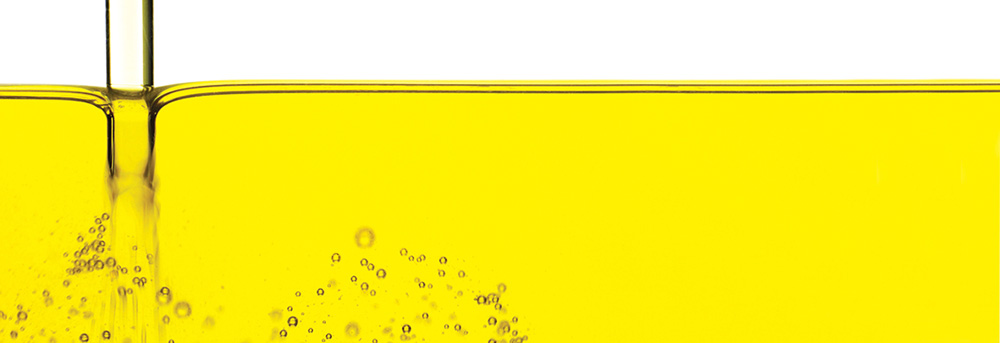 The SMART dipstick takes all of the guesswork out of knowing whether or not oil has gone bad or if there is still some life in it, thanks to work done by researchers at UD Research Institute beginning in the late 1980s. In 1992, R&D Magazine awarded the invention as one of the 100 most technologically significant products of that year. The device, called RULER (Remaining Useful Life Evaluation Routine) works with all types of oils, from fast-food deep fryers to government aircraft. Researchers Bob Kauffman and Douglas Wolf developed the product to quickly determine when it’s time to change the oil. It does so by calculating how much antioxidant — an additive that helps keep the oil from degrading too quickly — is left in the fluid. RULER is sold worldwide, with steam, gas and wind power plants being the largest market.
The SMART dipstick takes all of the guesswork out of knowing whether or not oil has gone bad or if there is still some life in it, thanks to work done by researchers at UD Research Institute beginning in the late 1980s. In 1992, R&D Magazine awarded the invention as one of the 100 most technologically significant products of that year. The device, called RULER (Remaining Useful Life Evaluation Routine) works with all types of oils, from fast-food deep fryers to government aircraft. Researchers Bob Kauffman and Douglas Wolf developed the product to quickly determine when it’s time to change the oil. It does so by calculating how much antioxidant — an additive that helps keep the oil from degrading too quickly — is left in the fluid. RULER is sold worldwide, with steam, gas and wind power plants being the largest market.